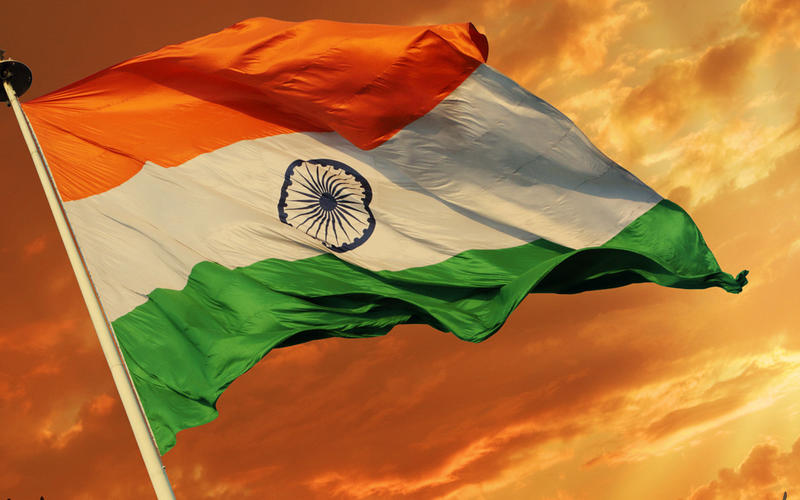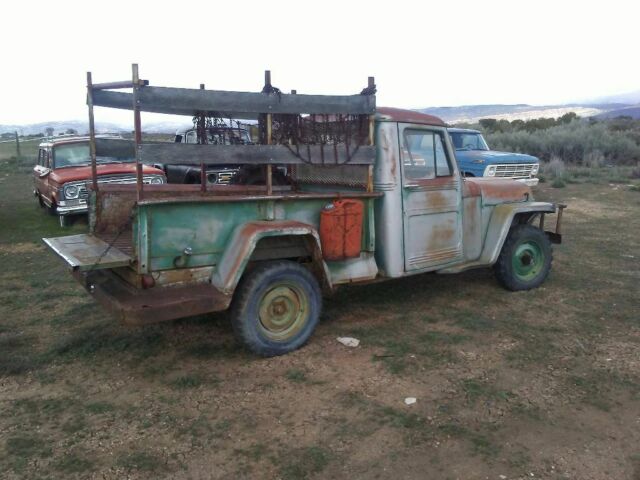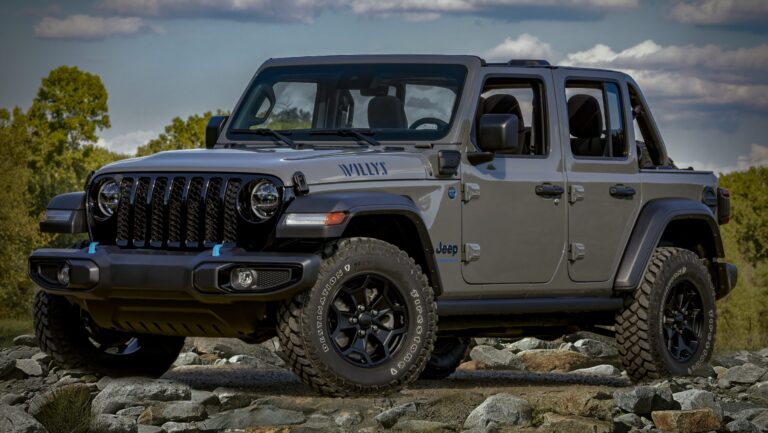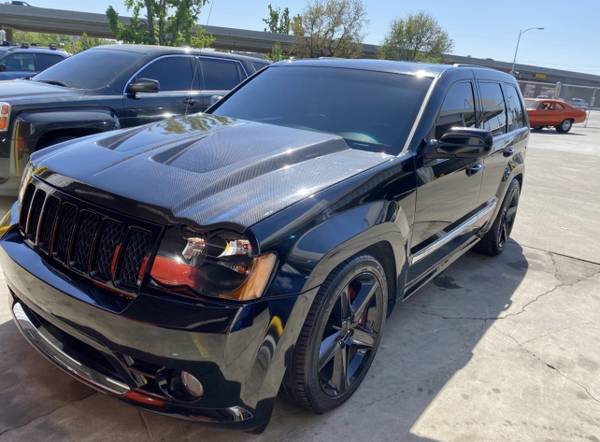Indian Army Jeep For Sale: Embarking on an Olive Green Adventure
Indian Army Jeep For Sale: Embarking on an Olive Green Adventure jeeps.truckstrend.com
Introduction: The Call of the Olive Green
For many automotive enthusiasts and adventure seekers in India, the phrase "Indian Army Jeep For Sale" evokes a distinct sense of nostalgia, rugged capability, and an undeniable allure. These aren’t just vehicles; they are steel-bodied testaments to the nation’s defense, having served tirelessly across diverse terrains, from the scorching deserts to the icy Himalayan peaks. Owning one is more than just acquiring a mode of transport; it’s about embracing a piece of history, a symbol of resilience, and an entry into a unique community of enthusiasts. This comprehensive guide will delve into every facet of acquiring an Indian Army Jeep, from understanding its appeal and the purchasing process to the vital considerations of restoration, legalities, and ongoing maintenance.
Indian Army Jeep For Sale: Embarking on an Olive Green Adventure
Why an Indian Army Jeep? Unpacking the Allure
The fascination with ex-Army jeeps stems from several compelling factors. Firstly, their unparalleled ruggedness and durability are legendary. Built to withstand extreme conditions and demanding usage, these vehicles boast heavy-duty chassis, robust powertrains, and simplistic mechanicals that are easy to repair and maintain. Secondly, there’s the undeniable historical and nostalgic value. Each scratch and dent tells a story of duty and service, offering a tangible connection to India’s military heritage. Thirdly, they offer exceptional off-road capability, making them perfect for adventurous souls who wish to explore challenging terrains where conventional vehicles falter. Lastly, the sense of exclusivity and community among owners is a significant draw. Owning an Army jeep is a statement, a hobby, and often, a gateway to a network of like-minded individuals who share a passion for these unique machines.
Identifying Your Olive Green Dream: Common Models Disposed by the Army
When searching for an Indian Army Jeep, you’ll primarily encounter a few iconic models that have formed the backbone of the military’s light vehicle fleet:
- Mahindra MM540/550: These are arguably the most common and recognizable ex-Army jeeps. Built under license from Willys/Jeep, they are known for their sturdy build, powerful diesel engines (often Peugeot or MDI engines), and excellent off-road performance. The MM550 XD (Extra Duty) with its stronger axles and military-spec features is particularly sought after.
- Maruti Gypsy King: A lightweight, nimble, and highly popular choice, especially among off-roaders. Powered by a peppy 1.3L petrol engine, the Gypsy is revered for its reliability, ease of maintenance, and exceptional power-to-weight ratio, making it a formidable performer on challenging trails. Its relatively modern design and readily available parts also make it a practical choice.
- Nissan Jonga (1-Ton): A rarer and more distinctive find, the Jonga (Jabalpur Ordnance and Guncarriage Assembly) was a powerful 4×4 built by Vehicle Factory Jabalpur (VFJ) based on the Nissan 1-Ton. Known for its brute strength, heavy-duty construction, and often a powerful petrol engine (later diesel conversions), the Jonga commands a cult following and is a highly desirable collector’s item due to its rarity and imposing presence.
- Mahindra Major: A slightly more modernized successor to the MM series, the Major often comes with a more refined interior and sometimes power steering, making it a more comfortable daily driver while retaining much of the ruggedness.

Older models like the original Willys CJ-3B or Ford M-B are less commonly found directly from army disposals now, mostly circulating in the private market after multiple ownerships.
Navigating the Acquisition Landscape: How Army Jeeps Come to Market
Indian Army jeeps enter the civilian market primarily through official disposal channels. Understanding these avenues is crucial for a potential buyer:

- MSTC Limited (Metal Scrap Trade Corporation Limited): This is the primary government-authorized platform for the e-auction of surplus and condemned vehicles from various government departments, including the Ministry of Defence. MSTC auctions are transparent, competitive, and offer a wide range of vehicles in varying conditions. Registration on the MSTC website and participation in e-auctions are the standard procedures.
- Direct Army Cantonment Auctions: Less common now for individual vehicles, some larger cantonments or military establishments might hold local auctions for bulk disposal of vehicles. These are often advertised locally.
- Dealers Specializing in Ex-Army Vehicles: A significant portion of disposed jeeps are bought in bulk by specialized dealers at MSTC auctions. These dealers then refurbish or sell the vehicles as-is to individual buyers. While convenient, this route might involve a premium over the auction price.
- Second-Hand Market/Private Sellers: Jeeps that have already passed through one or more civilian owners are available through online classifieds, local garages, and enthusiast groups. While offering more choice and negotiation room, due diligence regarding documentation and vehicle history becomes even more critical here.

A Deep Dive into Condition: What to Expect from a Disposed Vehicle
When you buy an Army jeep, especially from an auction, temper your expectations regarding its condition. These vehicles have seen hard service and are often sold "as-is, where-is." You can expect a wide spectrum:
- Scrap/Non-Running: These vehicles might be missing major components, have severe rust, or require a complete engine overhaul. They are suitable for those looking for a project or parts donor.
- Running but Needs Work: The engine might start, and the vehicle might move, but it will likely have significant mechanical issues (brakes, suspension, steering, electricals) and bodywork damage (dents, rust, torn upholstery). This is the most common category.
- Good Condition/Well-Maintained (Rare): Very occasionally, a vehicle might be disposed of in relatively good shape, requiring only minor repairs or servicing. These fetch higher prices.
- Fully Restored: These are vehicles already bought, restored, and resold by individuals or specialized workshops. They command the highest prices but offer a ready-to-drive experience.
Expect wear and tear, faded paint, interior damage, and potential rust in critical areas like the chassis, floorboards, and body panels. Always assume a significant investment in restoration will be necessary.
The Prudent Buyer’s Checklist: Key Considerations Before Purchase
Before you commit to buying an Indian Army Jeep, a thorough evaluation is paramount:
- Documentation is King: Verify the originality and completeness of all papers, including the original release order from the Army/Ministry of Defence, the auction sale certificate (if applicable), and clear records of ownership transfer. Without proper documentation, registering the vehicle will be impossible.
- Mechanical Inspection: If possible, have a trusted mechanic accompany you. Check the engine for leaks, strange noises, and general health. Inspect the gearbox, differential, and 4×4 system for functionality.
- Chassis Integrity: Look for signs of severe rust, cracks, or previous accident damage on the chassis frame. A compromised chassis can be dangerous and expensive to repair.
- Bodywork and Rust: Pay close attention to rust, especially in common areas like the floorboards, wheel arches, battery tray, and door sills. While surface rust is manageable, deep structural rust can be a deal-breaker.
- Electricals and Wiring: Army vehicles often have simplified electrical systems, but check for cut wires, shoddy repairs, and functionality of lights, horn, and gauges.
- Tires and Suspension: Worn-out tires and a tired suspension are common. Factor in the cost of replacement.
- Budget for Restoration: Be realistic. A seemingly cheap jeep can quickly become an expensive money pit. Allocate a substantial budget for repairs, parts, paint, and potential engine overhauls.
From Auction Yard to Your Driveway: A Step-by-Step Buying Guide
- Research and Budget: Decide which model suits your needs and budget. Research typical prices for different conditions.
- Identify Sources: Regularly check the MSTC website for upcoming auctions. Connect with local dealers specializing in ex-Army vehicles or join online enthusiast groups for private sales.
- Physical Inspection: This is crucial. Visit the vehicle, inspect it thoroughly as per the checklist above. If buying from an auction, attend the physical inspection days.
- Bidding/Negotiation: If participating in an MSTC auction, understand the bidding process. If buying from a dealer or private seller, negotiate based on the vehicle’s condition and market rates.
- Payment: Once the bid is won or deal struck, arrange payment as per the terms (usually within a few days for auctions).
- Collection and Transportation: Arrange for the vehicle to be picked up. If non-running, a flatbed tow truck will be required.
- Documentation Transfer: This is the most critical step post-purchase.
Beyond the Purchase: Restoration, Customization, and Maintenance
Owning an ex-Army jeep often means embarking on a restoration journey.
- Restoration: This can range from minor mechanical fixes and a fresh paint job to a full nut-and-bolt restoration. Common areas include engine overhaul, gearbox and differential servicing, suspension replacement, brake system overhaul, electrical rewiring, and extensive bodywork to fix rust and dents.
- Customization: Many owners personalize their jeeps. Popular modifications include adding power steering, disc brakes, wider tires, aftermarket seats, sound systems, hardtops, bull bars, and off-road accessories like winches and snorkels. Some even opt for engine swaps for more power or better fuel efficiency.
- Maintenance: These vehicles are generally low-tech, making them relatively easy to maintain for a competent mechanic. Regular oil changes, lubrication, and checking fluid levels are essential. Spare parts for Mahindra and Maruti models are readily available, though specific military-spec parts or Jonga parts might require a dedicated search.
The Paper Trail: Essential Legalities and Documentation
This is perhaps the most challenging aspect of owning an Indian Army Jeep. Proper documentation and RTO (Regional Transport Office) registration are non-negotiable.
- Release Order/Sale Certificate: The original document from the Army/Ministry of Defence certifying the vehicle’s disposal is paramount. Without this, registration is impossible.
- Auction Sale Receipt/Invoice: Proof of purchase from MSTC or the dealer.
- Form 29 & 30: For transfer of ownership.
- NOC (No Objection Certificate): If the vehicle is being registered in a different state from where it was disposed or previously registered.
- Police Verification: Often required to ensure the vehicle is not stolen.
- Fitness Certificate (FC): Mandatory for older vehicles. The RTO will conduct an inspection to ensure the vehicle is roadworthy.
- Insurance: Essential before driving on public roads.
- Road Tax: To be paid as per state regulations.
The process can be lengthy and requires persistence. It’s advisable to consult with an RTO agent experienced in handling ex-Army vehicle transfers. Some states have stricter rules or even bans on registering certain older army vehicles, so verify local regulations.
Challenges and Solutions: Overcoming Hurdles in Your Jeep Journey
- Availability: Genuine, well-documented jeeps can be scarce. Solution: Be patient, monitor MSTC, and network with reliable dealers/enthusiasts.
- Spare Parts: While Mahindra and Gypsy parts are common, specific military-spec components or Jonga parts can be hard to find. Solution: Join online forums, connect with specialized workshops, and be prepared to source parts from different cities.
- Skilled Mechanics: Not all mechanics are adept at working on older, more basic vehicles. Solution: Find a mechanic specializing in jeeps or vintage vehicles.
- Re-registration Hurdles: RTO processes can be complex and time-consuming. Solution: Hire a reputable RTO agent, have all documents meticulously prepared, and be prepared for multiple visits.
- Cost of Restoration: Can easily exceed the purchase price. Solution: Plan your budget realistically, prioritize essential repairs, and consider DIY where possible if you have the skills.
Estimated Price Guide: Indian Army Jeeps
Prices for Indian Army Jeeps vary significantly based on model, condition, and documentation status. The table below provides a general estimated range (in INR) for vehicles typically found on the market. These are estimates and actual prices can differ.
| Model | Typical Year Range (Disposal) | Condition Spectrum | Estimated Price Range (INR) | Notes |
|---|---|---|---|---|
| Mahindra MM540/550 | 1980s – early 2000s | Poor/Scrap | 50,000 – 1,20,000 | Classic rugged jeep, good for restoration, common diesel engines. |
| Running/Needs Work | 1,20,000 – 2,50,000 | |||
| Good/Well-maintained | 2,50,000 – 4,00,000 | |||
| Maruti Gypsy King | 1990s – 2010s | Poor/Scrap | 70,000 – 1,50,000 | Lightweight, peppy petrol engine, excellent off-roader, high demand. |
| Running/Needs Work | 1,50,000 – 3,00,000 | |||
| Good/Well-maintained | 3,00,000 – 5,00,000+ | |||
| Nissan Jonga (1-Ton) | 1960s – 1990s | Poor/Scrap | 80,000 – 2,00,000 | Rarer, powerful, heavy-duty, iconic, restoration costs can be very high. |
| Running/Needs Work | 2,00,000 – 4,00,000 | |||
| Good/Well-maintained | 4,00,000 – 7,00,000+ | Fully restored Jongas can fetch 10 lakhs or more depending on quality and originality. | ||
| Mahindra Major | 2000s – 2010s | Running/Needs Work | 1,80,000 – 3,50,000 | More modern successor to MM series, better ergonomics, often diesel. |
| Good/Well-maintained | 3,50,000 – 5,00,000+ |
Note: "Good/Well-maintained" refers to vehicles needing minimal work. Fully restored examples, especially for rare models like the Jonga, can command significantly higher prices.
Frequently Asked Questions (FAQs)
- Q1: Is it legal to buy an Indian Army Jeep?
- Yes, it is perfectly legal to buy a decommissioned Indian Army Jeep, provided it has been properly disposed of by the Ministry of Defence through official channels like MSTC and comes with complete and valid documentation.
- Q2: How do I register an ex-Army Jeep in my name?
- You need the original Army release order/sale certificate, your purchase documents (MSTC invoice, etc.), Forms 29 & 30 for transfer, a valid ID, address proof, and often a police verification. The vehicle must pass a fitness test at the RTO. It’s advisable to use an experienced RTO agent.
- Q3: Are spare parts readily available for these jeeps?
- For Mahindra MM series and Maruti Gypsy, most mechanical and body parts are relatively easy to find in the aftermarket. For rarer models like the Jonga, parts can be very difficult to source and may require fabrication or importing.
- Q4: What’s the average cost of restoring an ex-Army Jeep?
- Restoration costs vary wildly depending on the vehicle’s initial condition and the desired level of finish. A basic running restoration might cost INR 1-2 lakhs, while a full, ground-up restoration can easily exceed INR 3-5 lakhs, sometimes even more for rare models.
- Q5: Which is the best model to buy for a first-timer?
- For a first-timer, the Mahindra MM540/550 or Maruti Gypsy King are generally recommended due to better parts availability, wider mechanic familiarity, and a larger community for support.
- Q6: Can I use an ex-Army Jeep as a daily driver?
- While possible, most ex-Army jeeps are not designed for modern daily commute comfort. They lack amenities like AC, power steering (in older models), and offer a harsh ride. They are better suited for weekend adventures, off-roading, or as hobby vehicles. However, with modifications like power steering, better seats, and improved suspension, they can be made more comfortable.
- Q7: Do I need a special license to drive one?
- No, a standard light motor vehicle (LMV) driving license is sufficient, provided the vehicle is registered as an LMV.
Conclusion: More Than Just a Vehicle, a Legacy
Acquiring an Indian Army Jeep is a journey that goes beyond a mere transaction. It’s an immersive experience that connects you with a rich legacy of service, resilience, and adventure. While the path to ownership and restoration might present its share of challenges, the rewards – the thrill of driving a truly iconic machine, the camaraderie with fellow enthusiasts, and the sheer joy of bringing a piece of history back to life – are immeasurable. With careful research, a realistic budget, and a passion for these olive green marvels, you can proudly own and drive a testament to India’s rugged spirit, making every journey an adventure.





